Most owl species stay in the same place during summer and winter, even using the same nest. There are only a few exceptions, like the small, insect-eating flammulated owls, which are small owls, and the snowy owls of the Arctic circle. These exceptions notwithstanding, most owls prefer to stick close to home all year round.
Do Owls Stay in the Same Area?
Yes, most North American species of owls such as the great horned owl, barn owl, great gray owl, and barred owl are non-migratory birds for the most part. When owls migrate, they don’t do it in a traditional sense.
Those that migrate or travel do so due to snow cover making hunting prey and finding food sources difficult in winter conditions. But this is not always the case for migrations.
Interestingly, starving owls don’t cause the irruptive behavior of some owls. Some owls still travel south during the breeding season even though there’s an abundance of prey.
It is believed that these owls have a highly specialized diet and the available prey in their area might not be sufficient to meet this diet.
But most species of owls tend to stay in one area and there are a few reasons why they do so.
For one, they generally mate for life and raise their young together. This gives them a built-in partner to help protect their territory from other animals.
Additionally, many owls nest in the same place year after year, often returning to the same tree or hollow for eight years or more. This familiarity provides them with a safe place to raise their young and also gives them a good sense of the surrounding area, which can be helpful in finding food and avoiding predators.
Some owls migrate seasonally to find food or avoid harsh weather, but those that don’t usually stick to relatively small areas where they know what to expect in terms of food availability and predators.
A good example of these non-migratory owls are the barred owls that mate for life and will spend their entire lives within the same six-mile radius.
So, whether it’s because they have a mate or nest to return to, or because they’re just creatures of habit, owls typically stay close to home.
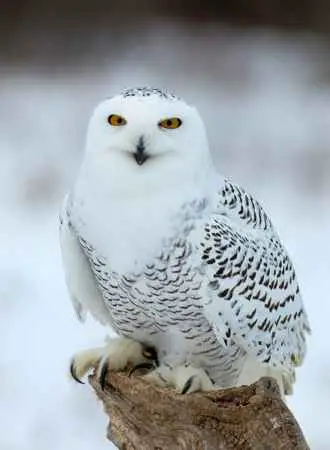
How Do Owls Survive in the Winter?
As the weather gets colder, owls have to adapt in order to survive. One way they stay warm is by having thermally efficient feathers that go all the way down to their toes. This prevents valuable heat from escaping their feet and keeps them warm in cold temperatures. They also don’t have any pain receptors in their lower legs so they don’t suffer the effects of frostbite.
Owls also have a special counter-current blood flow system in their feet and legs. This helps them feel warmer in the extreme cold. Blood that flows towards the body from the feet extracts the warm air from the freshly oxygenated blood.
Larger owls, like the Snowy Owl, are more resilient than smaller owls and can handle cold temperatures down to -40°F.
However, deep snow can still be problematic for all owls because it makes it difficult to find food. As a result, they often have to travel long distances in order to find enough to eat, and if necessary owls will attack cats for food (whilst owls will attack humans, its normally if you go near their nest).
Thankfully, owls are well-adapted to the cold and are able to survive even in the harshest of winters.
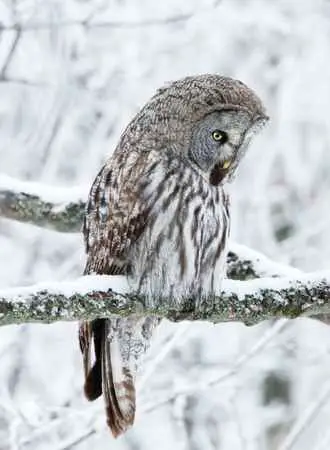
What Owls Fly South for the Winter?
Every year, billions of birds undertake arduous journeys to reach their wintering grounds. Some travel only a short distance, while others fly thousands of miles.
One bird that undertakes an epic journey is the Snowy Owl. These magnificent creatures breed in the Arctic tundra and hunt lemmings, ptarmigans, and other small birds.
In the winter, they migrate south to warmer areas with more open ground, where they can better spot their prey such as rodents feeding on seeds.
While most Snowy Owls stay north of the United States-Canada border, in extreme years some have been spotted as far south as Texas and Florida. Those who travel to Logan Airport during the months of early November and early April do so because of the area’s short scruffy plants and grasses which make hunting more viable.
Likewise, great horned owls, while considered non-migratory, would sometimes migrate to other areas during extreme winters when the rodent population is affected.
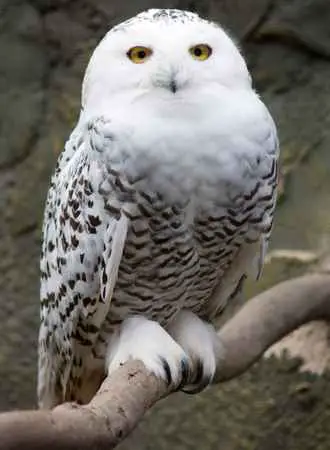
How Do Owls Hunt in the Winter Months?
Winter is a tough time for many animals, but owls are well-adapted to hunting in the snow. They have several strategies for finding prey, including using their excellent vision and hearing.
One of the most effective ways for owls to hunt is by perching on a high vantage point and scanning the ground for movement. When they see something, they swoop down and grab it with their powerful talons.
Owls can also hear tiny rodents and other small prey moving under the snow, and they use this to their advantage by landing near the sound and then pouncing.
No matter what method they use, owls have incredible adaptations to still hunt rodents and other small animals during winter.
What Do Owls Eat in the Winter?
When the snow starts to fly and the temperatures drop, owls have to make some adjustments to food shortage. Although these nocturnal predators typically hunt small mammals, such as mice and voles, they will also take down other birds or large mammals if necessary. This is because deep snow can make it difficult for owls to find small prey. To help them survive the winter, owls will also eat more frequently during this time of year.

Where Do Snowy Owls Spend Winter?
Snowy owls can be found in open areas throughout the Northern Hemisphere, including tundra, marshes, and prairies.
During the cold-weather months, a snowy owl migrates southward in search of food. These owls engage in what is called irruption, an unpredictable migration pattern. This means it’s not always easy to know where they’ll turn up next.
Sometimes many snowy owls stay in southeastern Canada, the upper Great Lakes states, and New England almost every year. But other times, irruptions can occur, leading large numbers of snowy owls to venture farther south than usual in search of food.
Where Do Barn Owls Migrate in the Winter Months?
Even though young barn owls may travel hundreds of miles from where they hatched, adult barn owls do not seem to migrate seasonally, even in the northern parts of their range. Instead, they seem to stay in the same general area year-round. This may be because they are able to find enough food and suitable nesting sites close to home.
The barn owl species are relatively sedentary birds and only travel short distances when they are looking for a new place to nest or if they are forced to move due to changes in their habitat.
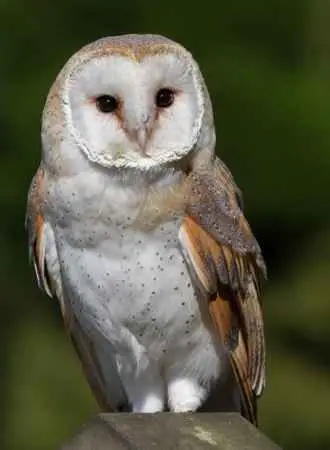
The Bottom Line on Whether Owls Migrate or Not
So do owls migrate? Not all owls, only some do. Most owl species are considered non-migratory, except for a few owl species such as the snowy owls, the long-eared owl, and the short-eared owl that migrate south during winter.
Some migratory behavior has been observed in other species, but it is not well understood and varies from population to population. What we do know is that many owl populations are quite adaptable and can survive in a variety of habitats, so they may not need to migrate in order to find food or shelter.
FAQs on Do Owls Migrate
Do Owls Hibernate?
While many animals hibernate in the winter to escape the bad weather, owls are well-adapted to live in most climates and temperatures. In fact, they do not hibernate at all.
Other owls do migrate in regular or random patterns, but this is more likely due to food availability or mating season than the temperature.
For instance, snow owls travel to southern Canada and the northeast united states during lemming population crashes which happen every 7 years.
Other examples are the burrowing owls of Canada and the Rookies. These magnificent owls travel south to Texas and as far as Central America during winter for warmer climates and better hunting opportunities.
Where Do Owls Live?
There’s an owl population in every continent except for Antarctica.
Can Owls Fly Long Distances?
Most people know that owls are excellent flyers. They are silent in flight and can maneuver quickly and effortlessly through the air. But did you know that some owl species are capable of flying long distances?
Snowy owls, for example, are known to make periodic journeys of several thousand miles. In fact, a snowy owl was spotted in Hawaii a few years back – quite a feat for a bird that typically resides in the Arctic regions.
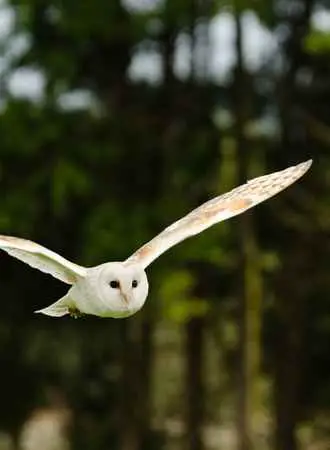
When Do the Snowy Owl Population Go Back to the Arctic and Northern Canada?
The snowy owl is a bird of prey that is native to the Arctic and Northern Canada. These birds typically migrate south to the United States and Canada during the winter months in order to find food.
However, as the weather starts to warm up in February and March, the snowy owls will begin their journey back to their breeding grounds in the Arctic. This migration can take several weeks, and the birds will usually travel alone or in small groups. Once they arrive at their destination, they will build nests and mate.





